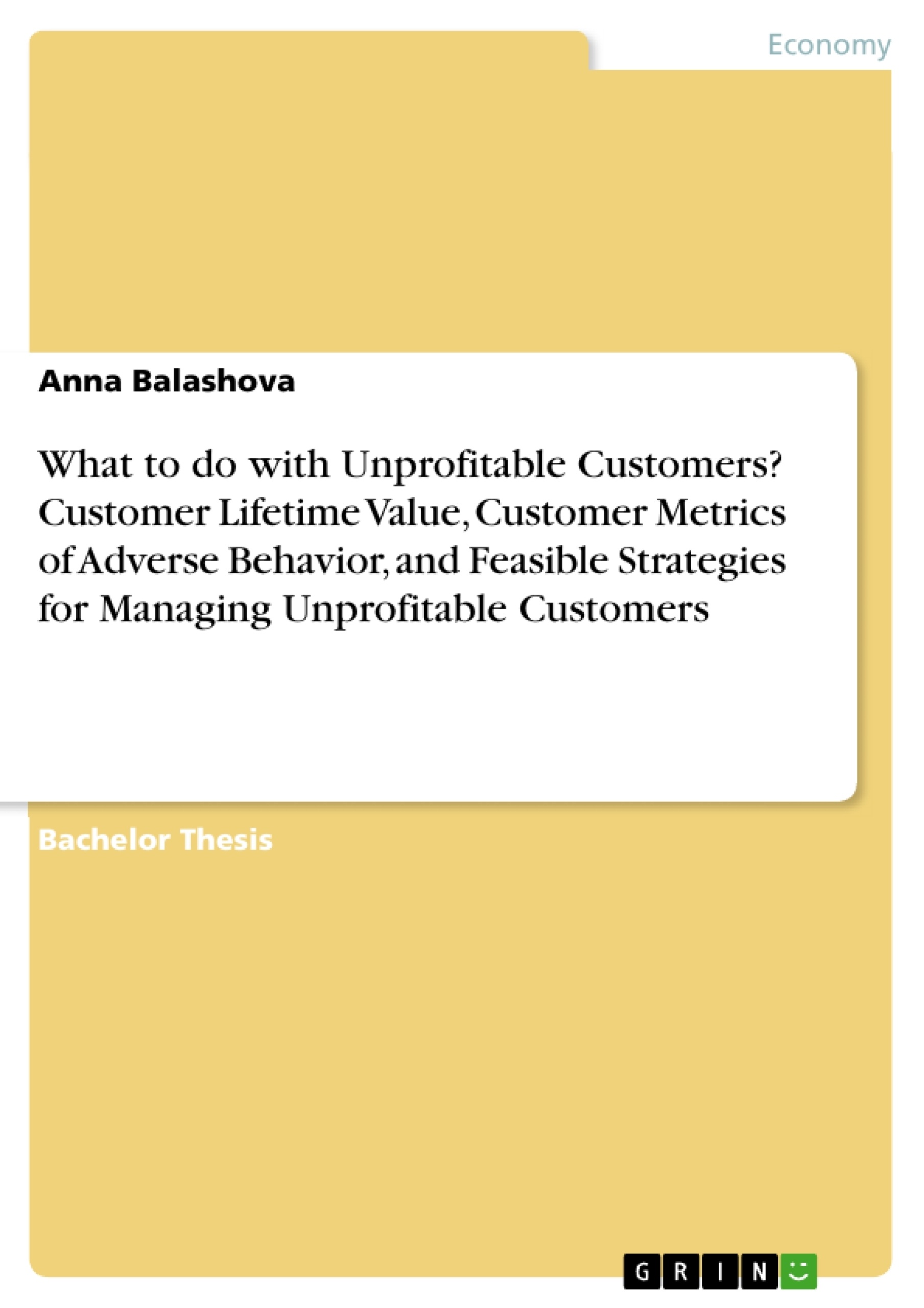In this paper, I analyze how customer metrics like Customer lifetime value (CLV) are linked to strategies for managing unprofitable customers. Valuing customers or their behavior, respectively, has become an indispensable issue for any commercial activity. When determining causes and reasons of the customers’ contribution to firm value or performance, the customer base usually is analyzed and evaluated, whereas profitable and unprofitable customers are identified. Especially the subject of unprofitable customers, the methods to single them out and their input on the firm’s financial performance have been thoroughly discussed in the literature.
Because regular financial metrics have restricted diagnostic potential, relying on customer metrics appears more suitable for determining customer’s profitability. There are diverse methods for evaluating customers, such as previous period customer revenue, past customer value, customer lifetime duration and customer lifetime value (CLV). CLV examines customer profitability from a prospective perspective, foreseeing future customer behavior and discounting future cash flows. CLV and its measurement models, depending on the kind of customers and products obtained by the company, provide a basis for strategic and tactical decisions.
Customer’s persistent adverse behavior can lead to unprofitable outcome and should be considered by determining profitability on the base of CLV. There are several strategies for handling unprofitable customers. Before applying one of these, it is necessary to measure potential benefits and losses, as the chosen strategy can have a longrun effect on the firm’s clientele. There are some interconnections between various CLV measurement models, other customer metrics and strategies applied to unprofitable customers.
Inhaltsverzeichnis (Table of Contents)
- Introduction
- Customer lifetime value and its measurement models.
- Different perspectives on CLV
- Measurements models of CLV in contractual context.
- Basic structural model
- Recency, frequency and monetary model.
- Measurement models of CLV in noncontractual context
- Pareto/NBD model and its variations
- Markov chain model
- Customer metrics of adverse behavior.
- Demand for customer service.
- Partial churn.
- Deal-proneness.
- Share of wallet.
- Analysis of feasible strategies for managing unprofitable customers and their linkage to customer metrics and CLV
- Retention strategies.
- Explanatory framework for retaining unprofitable customers.
- Abandonment strategies.
- Explanatory framework for abandoning unprofitable customer
Zielsetzung und Themenschwerpunkte (Objectives and Key Themes)
This bachelor thesis aims to analyze the relationship between customer lifetime value (CLV) and customer metrics of adverse behavior, specifically focusing on strategies for managing unprofitable customers. It seeks to identify the key factors that contribute to customer unprofitability and explore feasible solutions for addressing this issue.
- Customer lifetime value (CLV) and its measurement models.
- Customer metrics of adverse behavior (e.g., demand for customer service, partial churn, deal-proneness, share of wallet).
- Strategies for managing unprofitable customers (e.g., retention and abandonment strategies).
- Linkage between customer metrics, CLV, and strategies for managing unprofitable customers.
- Impact of different strategies on the firm's profitability and clientele.
Zusammenfassung der Kapitel (Chapter Summaries)
The thesis begins by defining customer lifetime value and exploring different measurement models, including both contractual and noncontractual contexts. The second chapter delves into customer metrics of adverse behavior, such as demand for customer service, partial churn, deal-proneness, and share of wallet. The third chapter analyzes feasible strategies for managing unprofitable customers, including both retention and abandonment approaches. It also examines the relationship between customer metrics, CLV, and the effectiveness of these strategies.
Schlüsselwörter (Keywords)
Customer lifetime value (CLV), customer metrics, adverse behavior, unprofitable customers, retention strategies, abandonment strategies, marketing strategy, customer relationship management (CRM).
- Citar trabajo
- Anna Balashova (Autor), 2016, What to do with Unprofitable Customers? Customer Lifetime Value, Customer Metrics of Adverse Behavior, and Feasible Strategies for Managing Unprofitable Customers, Múnich, GRIN Verlag, https://www.grin.com/document/366485



